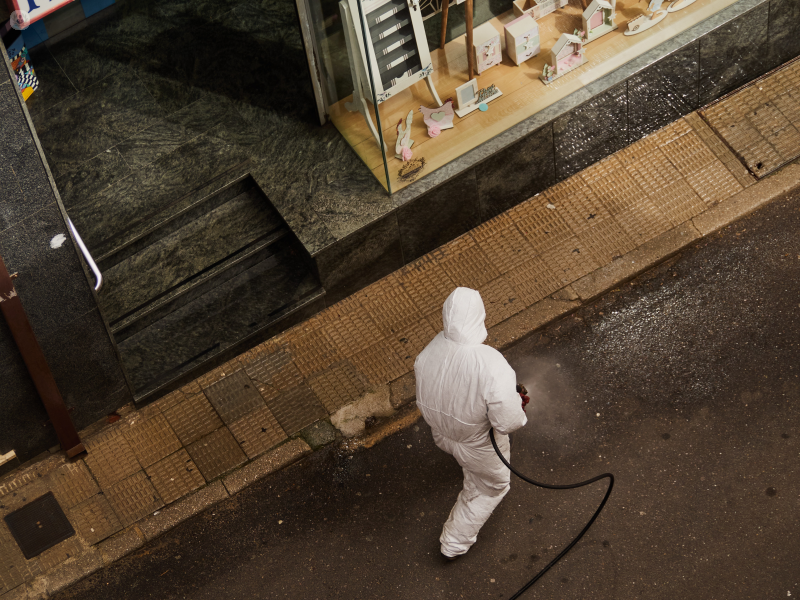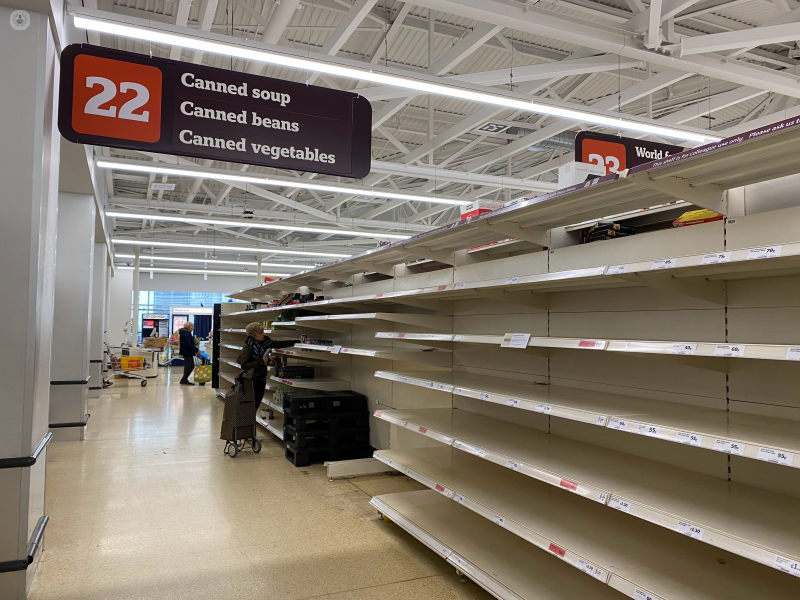How is each country dealing with the Covid-19 outbreak?
Written by:As of 27 March 2020, the global number of people currently known to be infected by the coronavirus has passed 530,000, and over 24,000 people have died. India has just issued a historic 21-day lockdown - the largest ever seen - for its 1.3 billion citizens, the UK government has reportedly ordered 10,000 ventilators from Dyson, and both Spain and Italy’s death tolls respectively have surpassed that of China, making them the worst-hit countries in the world.
Meanwhile, China has recently announced that it has managed to stop the spread of the disease there proving hopeful that the lockdown strategies elsewhere will work.
While most countries have restricted movement of its citizens, each has employed slightly different approaches to tackle their own outbreak of Covid-19 - some more successful than others. In this article, we round up how some of the worst affected nations are dealing with the outbreak and what is making the Covid-19 headlines around the world.

Europe | the epicentre of Covid-19
So far within the EU, Schengen Area and the UK, almost all countries have heavily restricted social interactions, closed non-essential shops, restricting travel into and out of the EU and urged its citizens, some by law, to #stayhome. Countries like Italy, Spain, Portugal, and France all declared a state of emergency as the continent witnesses more reported cases and deaths than the rest of the world combined.
The head of the European Commission, Von der Leyen has recently said Europe is now “stepping up” in its fight against the virus by fulfilling Germany’s decision to bring patients from Italy and France to German hospitals to treat them. The European parliament is also meeting to vote online on emergency laws that involve releasing the EU Solidarity Funds.
Italy | 80,000 cases
One of the worst-hit countries in the world has been under lockdown for more than 18 days and in the last 24 hours saw 715 more deaths, totaling 8,215. Its 60 million citizens are only allowed to leave their houses to go to the supermarket or the pharmacy and have to carry a document stating why they are outside.
The World Health Organization recently said it was more optimistic by the lower rate of new infection in Italy over the last few days. Its regional director, however, stated new fears that the south could be hit next. After news of a lockdown approached Lombardy in the north back on 9 March, a huge wave of Italians fled to the south of the country to escape it. Worrying signs are coming from Campania (around Naples) where the country is less equipped than the north.
Spain | 57,000 cases
The country is now in its second week of lockdown and has announced another 655 fatalities from the coronavirus over the past 24 hours; however, the figure is below the daily rise recorded on Wednesday 25 March. The country’s Ministry of Health announced on the 25 March that authorities have closed a deal with China that involves buying €432 million worth of coronavirus supplies including:
- 5.5 million ‘rapid-tests’ to help diagnose infected people
- 550 million masks and respiratory protection gear
- 950 ventilators
- 11 million gloves

Meanwhile, Madrid has transformed an Olympic-sized ice rink - Palacio de Hielo - into a morgue after the city’s municipal funeral service said it could not take any more bodies.
Germany | 47,000 cases
While other countries are facing huge numbers of deaths, a different picture is appearing from Germany. The country has more than 47,000 confirmed cases - the fifth highest in the world - but only 200 deaths so far, well below other European countries with a mortality rate of just 0.4%. Italy currently has a mortality rate of 10%.
In contrast to other countries, Germany has not shut down daily life, although, public gatherings of more than two people aren’t allowed. Experts have argued that Germany responded well because they had time to prepare themselves, are better equipped with more intensive care units and employed an aggressive testing process from the start which prevented spread to the elderly population.
The testing procedure began when they had relatively low cases in young people, and involved testing and tracking infection clusters meticulously, even mild symptoms, using contact tracing to find the people an infected person had been in contact with and also quarantining them - which broke the infection chain. However, it is still early days and experts argue that we might still see deaths suddenly rise there.
UK | 10,000 cases
There are over 10,000 cases and more than 500 deaths in the UK - 100 more deaths were recorded in the last 24 hours, and Prime Minister Boris Johnson has tested positive for the virus. All non-essential shops have closed and people are only allowed out once a day to exercise and go to work. The government has now published new powers for the police allowing them to enforce the lockdown rules onto people that aren’t abiding by them. Although Boris Johnson has asked everyone to remain at home, many people are still taking to the streets.
Over 500,000 people signed up to be NHS volunteers to help support vulnerable people who cannot leave their homes and a nationwide ‘Clap for Carers’ applaud for NHS workers went underway at 8 pm on 26 March.
The UK has also declined to take part in the EU procurement scheme to bulk-buy mass amounts of ventilators for patients, protective gear for medical staff, and laboratory testing kits. Instead, the UK has requested 10,000 to be made by Dyson, and 3.5 million 15-minute home kits may be distributed to the general public in the coming weeks; however, reports on this may not be completely accurate.

France | 29,000 cases
There have been so far 1,696 deaths in France, and the 15-day lockdown is likely to be extended. President Macron said he will ask the army to step in and help the country, meanwhile, Luxemburg has offered to help treat French patients in their hospitals. France has started to build field hospitals in its eastern region of Alsace.
France has also said that the Tour de France may still go ahead without spectators, but it is too early to decide. It is due to take place from 27 June to 19 July.
S. Korea | 9,000 cases
Before measures were implemented anywhere, experts argued that Covid-19 had already spread around Asian countries such as China, Hong Kong, Singapore, and South Korea. While many world leaders downplayed the spread of the coronavirus, South Korea employed fast, mass testing after noticing one of the largest numbers of initial infections.
Similar to Germany, they put forward rigorous contact tracing and quarantined anyone who was near a carrier of the virus. The country of 51 million is still testing around 20,000 people to this day and has over 66 testing sites. Incredibly, they also integrate apps that warn users if they have been near a known case. They have so far managed to slow the outbreak across the country.
USA | 85,000 cases
The US now has more confirmed cases of coronavirus than any other country, with more than 85,500 positive tests, and more than 1,000 deaths. The US Senate passed a $2.2tn emergency relief package making it the biggest rescue deal ever in US history.

Last week, a record 3.5 million US citizens filed for unemployment benefits due to losing their jobs from the coronavirus outbreak, hinting that the country is already in a recession. This came as government officials in half of the states ordered for the closure of all restaurants, bars, cinemas, hotels, and gyms. Many car firms have also paused production and air travel has fallen.
Iran | 32,000 cases
The country has seen around 2,234 deaths so far. They announced restrictions on travel between neighbouring cities, and all schools and universities are to be closed until further notice to avoid a ‘second wave’ of infections. Some people ignored the advice and travelled during the Nowruz new year holidays which might force the government to decide to close parks for the festival of Sizdah Bedar on 1 April, where Iranians traditionally have picnics.
China | 81,000 cases
China has reportedly said it has seen no new infections in its citizens, apart from new ones arriving into the country. Due to this, they have announced they are drastically cutting down on the number of flights coming in and out of the country from 29 March. The government is worried the virus might be imported back into the country. Each Chinese airline is only allowed to have one flight a week on one specific route to a country.
India | 775 cases
India has planned a 1.7tn-rupee (£18.9bn) economic stimulus to millions of people affected by the recent lockdown. The finance minister stated that they do not want their citizens to go hungry and aims to distribute mass amounts of food for everyone at no cost. This will aim to feed around 800 million people over the coming months.
Japan | 1,300 cases
In the world’s most populous city, Tokyo, citizens aren’t seeing social restrictions to the same extremes as many European cities. However, the country is now witnessing a spike in infections, as 41 new cases on Wednesday were discovered. Schools have been closed for a month and Japan is likely to enter into a lockdown soon as Gov. Yuriko Koike asked all residents to stay at home. The 2020 Olympics were also due to be held in Japan later on in the year however, they decided to postpone it.

G20 nations
After their first-ever virtual summit, chaired by Saudi Arabia, the G20 leaders vowed to inject $5 trillion into the global economy, and do “whatever it takes" to minimise the economic and social impact of Covid-19 all over the world. All members committed to remaining united in its response to restore global growth, maintain market stability and strengthen worldwide co-operation to help get the global economy back on its feet.
Coronavirus vaccine: when will it be ready?
Around 43 companies around the world are currently developing vaccines against Covid-19 in Canada, USA, Germany, China, and UK. These vaccines are either in pre-clinical or clinical stage of development. The World Health Organization said they do not expect a vaccine to be available in less than 18 months.
Stay up-to-date with coronavirus news in the UK with live updates on the pandemic from Top Doctors.


